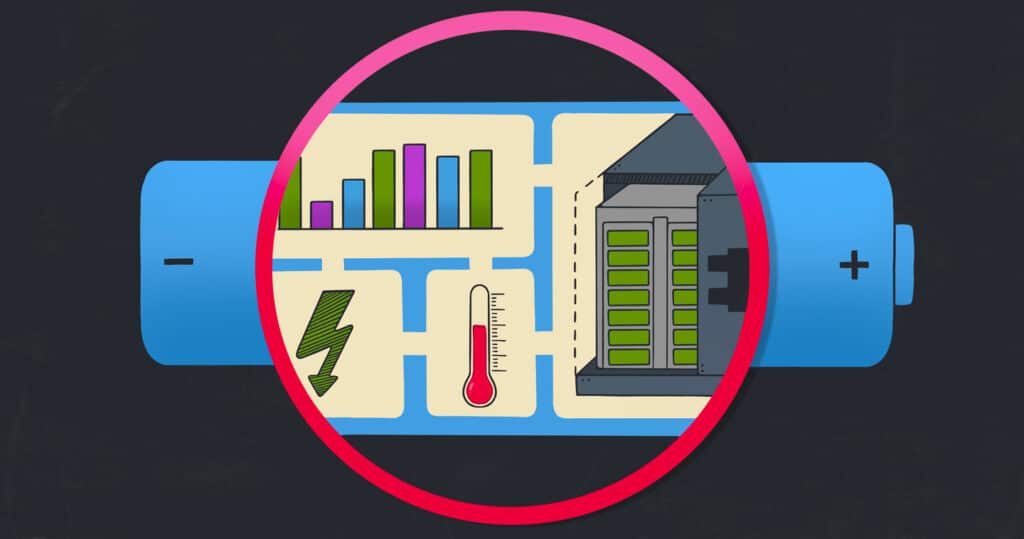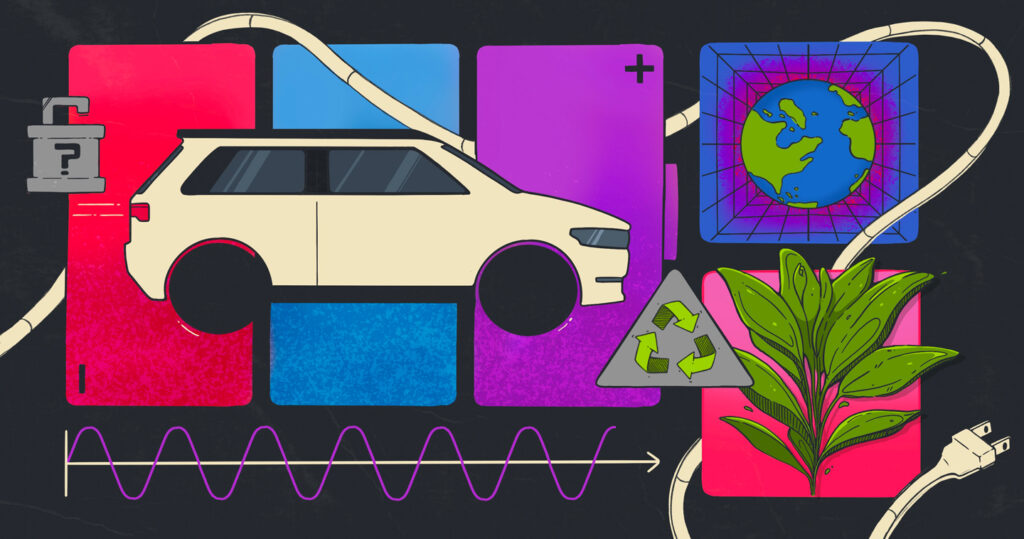Batteries, particularly lithium-ion batteries, are at the core of a more sustainable future, from powering electric vehicles to enabling a renewable energy grid. Despite their growing ubiquity, battery life cycles and their aging processes are still rather opaque for scientists and engineers. Thanks to data, engineers are gaining new insights into the mystery of the battery, and how to unlock the potential for an electrified future.
Getting inside a battery cell
For battery manufacturers and scientists, collecting battery data is, unfortunately, incredibly difficult; it’s expensive, highly technical, and an oft-opaque field. Prof. Michael Pecht, the founder of the Center for Advanced Life Cycle Engineering at the University of Maryland, seeks to address this issue through his research.
“The focus of my team’s work is on protecting consumers. Our team really thinks about the people,” he said. Pecht and his team apply advanced data science techniques to study batteries, publishing a wide variety of research and publicly available data with a focus on safety and reliability. Measuring the inner workings of batteries can be a technical and financial struggle, though.
“We usually try to tie the sensor data to the health of the battery,” he explained. “We can measure the current, the temperature, and the use conditions such as charge and discharge cycles, but that’s not really enough. These things are encased and connected to electrical systems, so you can’t really get inside. Now, we could use X-rays or embedded systems, but those things are timely and costly and can’t be incorporated with a product today.”
These challenges apply to the lithium-ion batteries found in all sorts of electronics, but electric vehicles (EV) pose a unique challenge of scale. “The battery pack of an EV might have two thousand battery cells, [battery manufacturers] cannot afford to put temperature sensors on every cell. Only one cell has to go bad, heat up too much, and it can cause problems,” Pecht said.

So, where’s the battery data?
Because of the challenges Pecht and his peers encounter, there’s a dearth of data on batteries.
Researchers from the University of Edinburgh aggregated publicly available data and found that there is vital need for more datasets to continue the research and development of this future-forward technology. The researchers, like Pecht, found that due to the immense number of variables to test, like operating temperature, charging intervals, use cases, and more, conducting research is an expensive, time-consuming process. For example, some of the X-ray technology needed to get a look inside lithium-ion batteries would require an investment of $1 billion, according to the University of Washington.
Despite huge public sector agencies, like NASA, publishing their datasets publicly, there’s still not enough information for broader innovation and development in an industry where every data point is precious. Because much of the research in this field is protected by intellectual property law, most of the data isn’t shared throughout the industry. What little information is released publicly is lacking in detail, leading to support in the scientific community for what’s known as the Battery Genome Project. Researchers from the Argonne National Laboratory argue that “the primary roadblock to a battery-data-science renaissance is the requirement for large amounts of high-quality data, which are not available in the current fragmented ecosystem.”
In other words: Without more data, innovation will be slower and harder to catalyze.
Rejoule’s quest to unlock battery data
Academia isn’t the only group interested in this challenge. ReJoule is one of a wealth of climate tech startups focused on innovating battery diagnostics to extract health data, enabling electric vehicles and battery energy storage systems to be managed more efficiently over their lifetime.
“ReJoule got our start focused on enabling the circular economy,” said Zora Chung, chief financial officer for the company. “The whole idea was to make batteries circular, making their first life last as long as possible, but then also finding new uses for it and then disposing it as responsibly as possible.” Using proprietary technology, the company leverages data to create devices which monitor battery health. They help their customers qualify batteries for second-life applications.
The whole idea was to make batteries circular, making their first life last as long as possible, but then also finding new uses for it and then disposing it as responsibly as possible.
“Our technology is based on a process called electrochemical impedance spectroscopy (EIS). Essentially, we inject a sine wave and measure the battery’s response. It’s used in labs around the world to measure cells,” said Chung. “In terms of the data itself, batteries have collections of data like voltage, current, and temperature, but that isn’t that useful for understanding the overall health. AC impedance, which is what we gather through EIS, is what really lets us understand the health of the battery. That lets us build a degradation curve — to actually monitor the battery over time.”
This new data is a part of ReJoule’s business plan to unlock opportunity and longevity for the battery ecosystem, from helping manufacturers identify good and bad cells to helping the used car market get a better grasp on the worth of a used EV.
“I see a couple long-term roles of our data and work. First is enabling the circular economy by finding second-life applications for these batteries,” Chung said. “Second, we see an opportunity to play a role in setting standards. Right now, the battery world is very much the wild west,” she continued. “For example, because consumer batteries are so structurally different, you can’t automate processes of deconstruction. Providing data will help set standards and improve the circularity of these battery systems.”
Making the most of what we have
Despite their challenges and unknowns, batteries are vital in the effort to electrify and decarbonize economies. From powering cars to replacing gas-sputtering generators in developing nations, batteries will become important tools for a more sustainable future, and their data essential.
Through data, battery manufacturers, car companies, and consumers will have more information on how to build longer-lasting batteries, how to lengthen their lifecycles, and where these batteries can be repurposed. These insights will help keep pollutants out of the air, and batteries out of the earth.
Ultimately, the pursuit of battery data is about bending our linear economy into a more circular shape. For people, planet, and prosperity.



